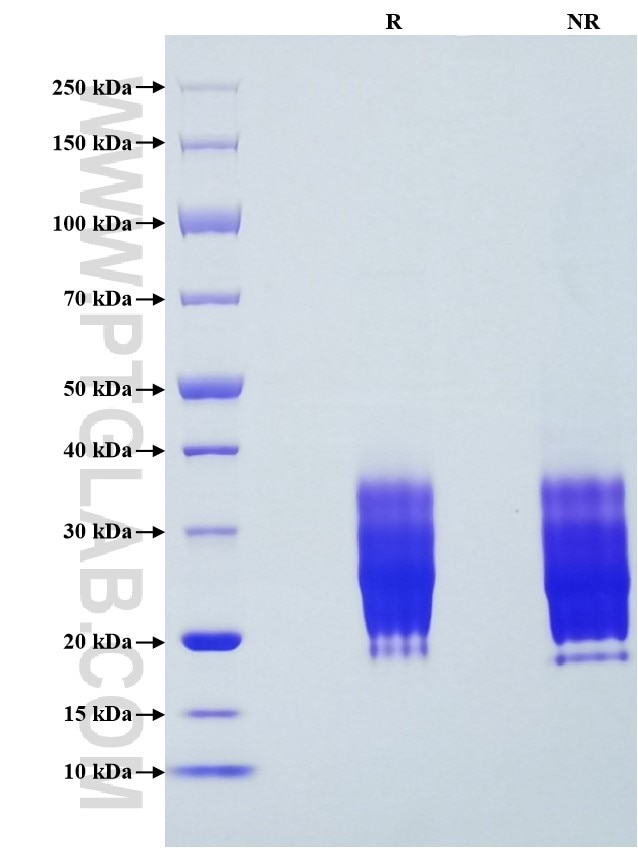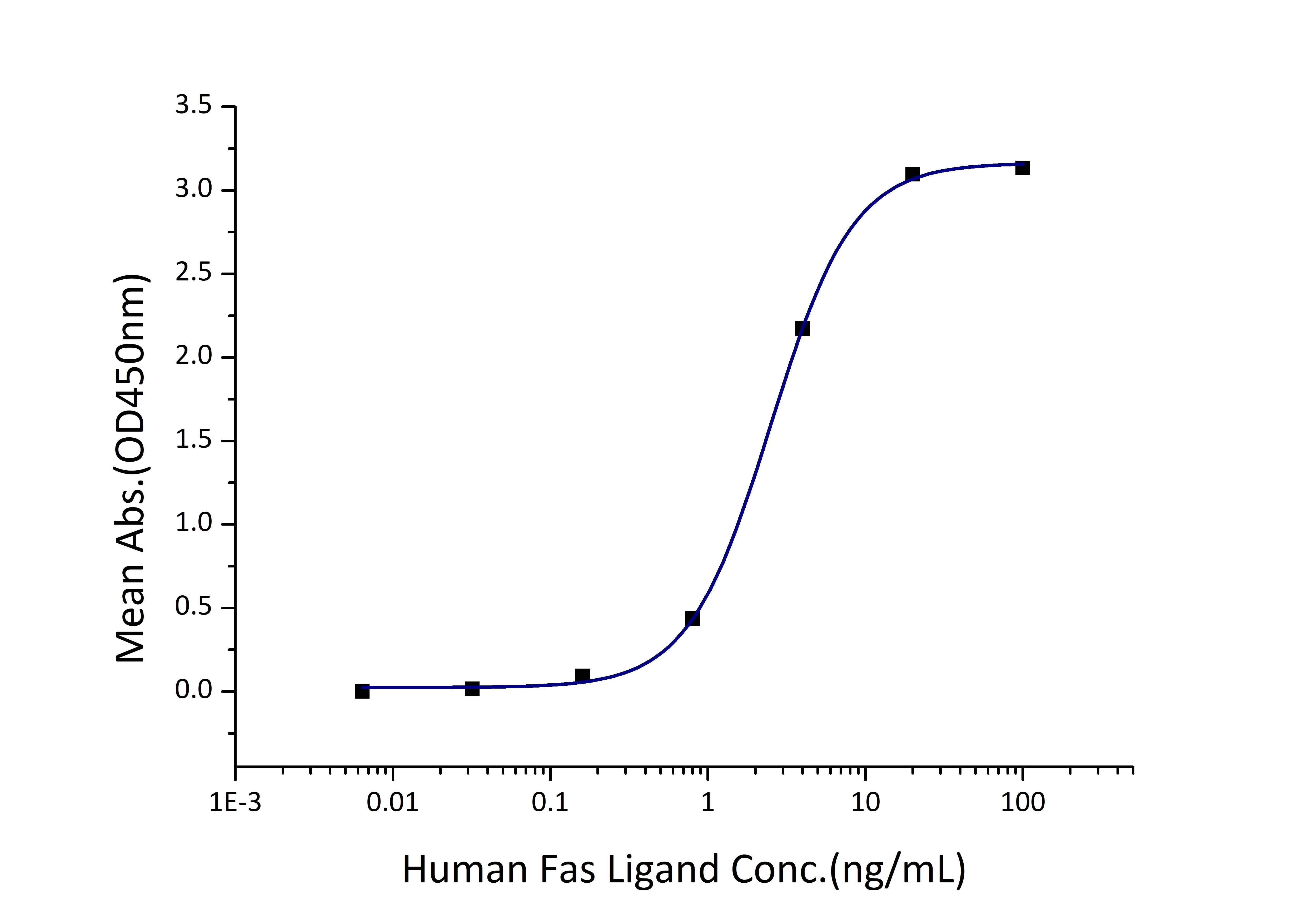Recombinant Human Fas/CD95 protein (His Tag)
Species
Human
Purity
>95 %, SDS-PAGE
Tag
His Tag
Activity
EC50: 1-5 ng/mL
Cat no : Eg0877
Validation Data Gallery
Product Information
| Purity | >95 %, SDS-PAGE |
| Endotoxin | <0.1 EU/μg protein, LAL method |
| Activity |
Immobilized Human Fas (His tag) at 2 μg/mL (100 μL/well) can bind Human Fas Ligand (hFc tag) with a linear range of 1-5 ng/mL. |
| Expression | HEK293-derived Human Fas protein Gln26-Asn173 (Accession# P25445-1) with a His tag at the C-terminus. |
| GeneID | 355 |
| Accession | P25445-1 |
| PredictedSize | 17.7 kDa |
| SDS-PAGE | 20-36 kDa, reducing (R) conditions |
| Formulation | Lyophilized from 0.22 μm filtered solution in PBS, pH 7.4. Normally 5% trehalose and 5% mannitol are added as protectants before lyophilization. |
| Reconstitution | Briefly centrifuge the tube before opening. Reconstitute at 0.1-0.5 mg/mL in sterile water. |
| Storage Conditions |
It is recommended that the protein be aliquoted for optimal storage. Avoid repeated freeze-thaw cycles.
|
| Shipping | The product is shipped at ambient temperature. Upon receipt, store it immediately at the recommended temperature. |
Background
Fas, also known as TNFRSF6, CD95, and APO-1, is a transmembrane glycoprotein belonging to the tumor necrosis factor (TNF) receptor superfamily. It can mediate apoptosis by ligation with an agonistic anti-Fas antibody or Fas ligand. Stimulation of Fas results in the aggregation of its intracellular death domains, leading to the formation of the death-inducing signaling complex (DISC). FAS-mediated apoptosis plays a role in the maintenance of cell homeostasis and in the deletion of useless or autoreactive T cells. Alterations in the CD95/CD95L pathway have been involved in several disease conditions, including autoimmune diseases, chronic inflammation and cancer.
References:
1.N Itoh. et al. (1991). Cell. 66(2):233-43. 2.M E Peter. et al. (2003). Cell Death Differ. 10(1):26-35. 3.M E Peter. et al. (2015). Cell Death Differ. 22(4):549-59. 4.Vesna Risso. et al. (2022). Cell Death Dis. 13(3):248.


